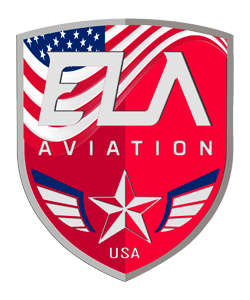The autogyro flight is an exciting experience that combines the freedom of flying with the feeling of being closer to nature. However, as in any form of aviation, safety is an absolute priority. Here are some essential tips and guidelines to ensure a risk-free autogyro flight.
Why is it important to fly safely on your autogyro?
From ELA Aviation, we want to show you the importance of having a safe flight with your autogyro. We want you to know that a safe flight can avoid serious problems for you and the people who accompany you.
Before flying, plan your route and check weather conditions. Avoid flying in adverse conditions. Make sure the autogyro is in top condition before taking off. Regular maintenance is essential to avoid technical problems in the air. Another very important part that must be worked effectively during training is landing. Perform a smooth and controlled landing to avoid damage to the aircraft.After the flight, perform a complete inspection of the autogyro to detect possible problems.
It should be added, that many professionals as well as experts, when they finish the flight in addition to doing the previous steps we have named try to implement new safety rules for their next flight. Due to the new experiences that are experienced on each flight, they can always be improved.
What shouldn’t you do while flying an autogyro?
While flying an autogyro, it is crucial to follow certain guidelines to ensure safety. You should not distract yourself or release the controls, as the autogyro requires constant attention to maintain a stable flight. Avoid sudden or acrobatic manoeuvres that could destabilize the aircraft. Do not overload the autogyro, always respecting the weight limits.
Improve the safety of your flight during training in your autogyro
Training in autogyros is essential to become a safe and competent pilot. During this process, it is essential to focus on safety to ensure every flight is a positive and incident-free experience.
- Choose an experienced teacher: selecting a qualified and experienced instructor is crucial. Make sure it is certified and has a solid track record in flying lessons in autogyros. A good instructor will guide you through the basics of safety and provide valuable advice.
- Acquire theoretical knowledge: do not limit yourself to practical flight; understand the theoretical principles behind the operation of the autogyros. This will help you make informed decisions during the flight and anticipate risk situations.
- Emergency practices: simulates emergency situations in a controlled environment. Learn to handle them correctly so that you can react effectively if they are presented in reality.
- Maintain communication: establish effective communication with your instructor and other pilots in the area. Proper communication is essential to avoid collisions and understand flight conditions.
- Weather conditions: check weather conditions before flying. Avoid flying in situations of strong wind, heavy rain or thunderstorms. If you’re not sure, your teacher or coach can also tell you the best time to take off.
- Learn from your mistakes: every flight is a learning opportunity. If you make a mistake, analyze what happened, understand what went wrong and work on improving.
Light conditions for safety in your autogyro
Light conditions for safety in your The autogyro flight is best performed during daylight hours, when visibility is optimal and conditions are more predictable. Direct sunlight facilitates the perception of details on land and the identification of other objects in airspace. On the one hand, horizontal visibility refers to your ability to see objects and terrain on the horizon. In daylight conditions, horizontal visibility is usually excellent, allowing you to plan your flight safely. On the other hand, vertical visibility refers to your ability to see objects and obstacles in the vertical, such as other aircraft, structures or elevated terrain. Daylight provides better vertical visibility compared to low light conditions.
Night flying in autogyro requires specialized training and additional equipment, such as navigation lights and a suitable lighting source. Avoid flying at night if you are not prepared for it. Night flying in autogyro requires specialized training and additional equipment, such as navigation lights and a suitable lighting source. Avoid flying at night if you are not prepared for it. It should be added that in situations of low visibility due to fog, heavy rain or low clouds, it is essential that you be especially cautious and consider postponing your flight if is it possible.
As you can see, we are experts in autogyros. That’s why we invite you to contact us if you have any questions.
